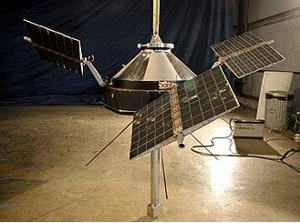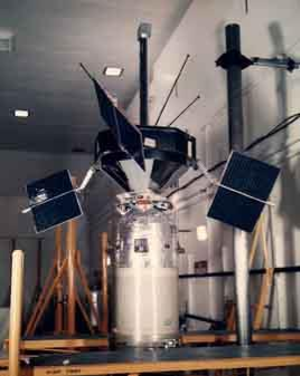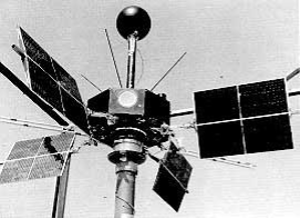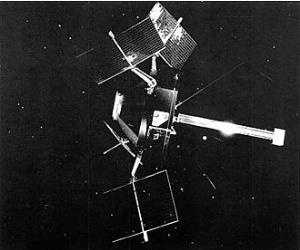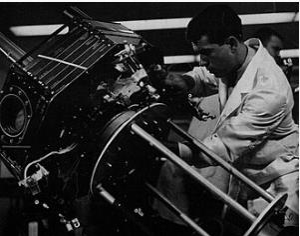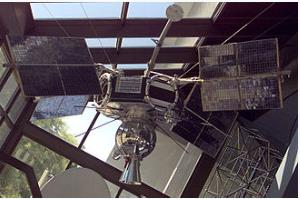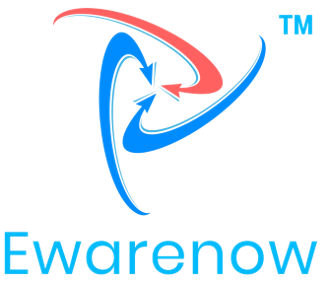The University of New Hampshire (UNH) College of Engineering and Physical Sciences (CEPS) has made major contributions in Space Science for 66 years and counting.
Congratulations to the UNH Space Science Center Teams
https://eos.unh.edu/space-science-center
You must have been thrilled to watch the successful launch of your space weather instruments toward the sun aboard a Space X Falcon 9 rocket on September 24, 2025.
This pair of missions can be viewed as a second generation of the UNH College of Engineering and Physical Science making a major contribution in collaboration with U.S. Government organizations.
The Early Years 1959-1968
The first generation of UNH Space Science ran from 1959 to 1968 funded by both NASA and the USAF. Dr. Laurence J, Cahill, Jr. joined UNH as Professor of Physics soon after receiving his Ph.D. from the University of Iowa in 1958. He led the program. His specialty was basic research into the earth's magnetic field and related phenomena by recording and transmitting measurements of magnetic field strength and direction with UNH-developed instruments in six of NASA's early Explorer satellites.
Early in the program, Paul managed the construction of a Zero Magnetic Field Facility, needed to calibrate and test the UNH instruments for the NASA satellites. It was built on the College of Agriculture's dairy farm cow pasture, far from manmade sources of magnetic fields. The building was a wood frame structure, built to the contractor's inconvenience, with non-magnetic but too-easily bent aluminum nails.
The Zero Magnetic Field system itself consisted of three pairs of Helmholtz Coils. They were very large circular rings of U-shaped aluminum brackets, filled with multiple loops of insulated copper wire. The pairs were supported by a grid of aluminum posts and beams. Undergraduates in the Physics Lab did much of the construction and testing of the system.
The size of the Helmholtz Coils required scrambling on and working from multiple levels of construction scaffolding. Fortunately, OSHA did not impose any constraints or issue any critque of how the students' safety was protected. Hmm, maybe because OSHA wasn't created until 1971.
NASA's Explorer program ultimately launched over 90 satellites. Explorer 18 was was the third of six successful satellites in Dr. Cahill's program: Explorer 12, 14, 18, 21, 26, and 28.
What is the significance of focusing on Explorer 18? Merely the author's perspective. His senior year leading up to his BSEE. Three years of work in Dr.Cahill's program. Driving the small, blue USAF Jeep from the Lab to the Zero Facility or driving to Radio Shack in Dover, NH for components. Climbing on the scaffolding to put finishing touches on the system. Dismantling and removing the steel scaffolding. Fabricating printed circuit boards (PCBs) . Soldering electronic components onto the PCBs. Fabricating aluminum boxes and covers for the instruments.
Dr. Cahill authorized Douglass W. MacLean and Wendell Sawyer to travel to Washington, D.C. in early October 1963 for a significant event at the Unites States Naval Observatory (USNO).
No, they were not invited to the official home of the U.S. Vice President to have beer and pretzels with Lyndon B. Johnson and Second Lady Ladybird Johnson.
Navigation is important to the U.S. Navy. Navigation requires extensive detection and use of magnetic fields. So it had its own Zero Magnetic Field Facility,
The UNH instruments for Explorer 18 had been delivered to NASA. NASA had integrated them, along with other instruments into the satellite's octagonal-sided box.
So NASA and UNH conducted acceptance tests to verify that the two magnetometer instruments worked properly in the satellite. Bottom line: the satellite and instruments passed with flying colors. OK to proceed with the plan and launch Explorer 18.
Wendell and Doug arrived at the Zero Magnetic Field facility at 8:30 AM and met the civilian Navy operator of the equipment. They had good, friendly discussions. For two hours, until three NASA vehicles arrived. A sedan with three "Suits". Two vans, each with a supervisor and two workers. One of the vans contained the satellite.
All got introduced and discussed the process. Two workers opened their van, moved the satellite in the facility, and placed it where instructed by the operator. It was after 11:00 AM. The NASA guys all wanted to have lunch first. At 1:30 PM everyone was back from lunch.
By 2:00 PM the Navy guy was coordinating the UNH pair and the NASA electrIcal pair on getting the tests set up and running.
At about 2:30 PM, with the five of them deeply focused on running the tests, one of the NASA management guys asked, "Do you need the mechanical group anymore?" Doug thoroughly and carefully considered the interruption for 3 milliseconds and politely said, "No, this is all just electrical stuff we're doing."
About 15 minutes later, the first set of tests was complete. Doug said, "OK. That's great. Now we just need to turn the satellite 90 degrees." Dead silence. Then the senior NASA management guy said, "The satellite cannot be turned 90 degrees. The mechanical group has left. We will need to do it tomorrow." And so it was done and the tests were successful.
References and credits
Full disclosure. Doug MacLean did not fabricate the final PCBs in Explorer 18. That task was outsourced to a new company, Sanders Associates, Inc., in Nashua, NH.
His obituary
https://www.legacy.com/us/obituaries/twincities/name/laurence-cahill-obituary?id=19216716
His own comment in Dr. Cahill's obituary
https://en.wikipedia.org/wiki/United_States_Naval_Observatory
Explorer Satellites with UNH Instruments
The following Explorer satellites carried UNH-developed fluxgate magnetometer instruments as part of Dr. Cahill's program:
